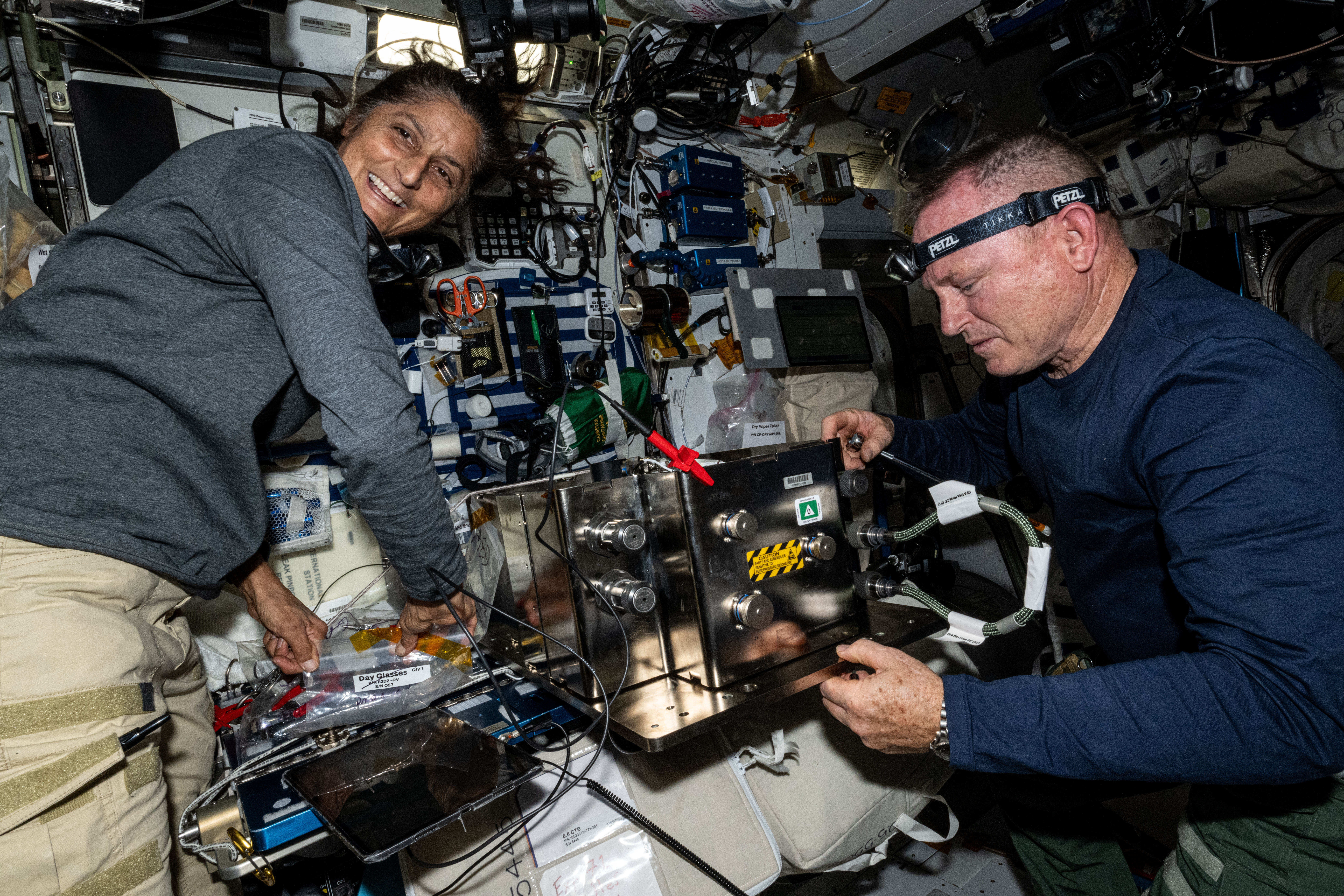
NASA astronauts Butch Wilmore, commander, and Suni Williams, pilot, of NASA’s Boeing Crew Flight Test, continue contributing to International Space Station research and activities since their arrival on June 6 to the orbiting laboratory. Wilmore and Williams have completed half of all hands-on research time conducted aboard the station as the expedition crew prepares for the departure of Northrop Grumman’s Cygnus. As packing takes most of the crew’s time, the extra help from Wilmore and Williams allows packing and research to happen simultaneously. To learn more about what other crew members are doing aboard the International Space Station, visit: blogs.nasa.gov/spacestation.
Media are invited to hear Wilmore and Williams discuss their mission during an Earth-to-space call at 11 a.m. EDT Wednesday, July 10. Read the agency’s coverage advisory for more information.
On July 1, Wilmore and Williams spent the morning in the Permanent Multipurpose Module, organizing stowage and tidying up. Wilmore then moved into the Japanese Experiment Module to disassemble an empty NanoRacks CubeSat Deployer in preparation for upcoming NanoRacks missions.
Later, Wilmore prepped and viewed samples for the Moon Microscope, a demonstration that allows flight surgeons on Earth to diagnose illnesses and could provide diagnostic capabilities for crews on future missions to the Moon and Mars. Meanwhile, Williams conducted some routine orbital pluming, then audited U.S. stowage items housed inside the Zarya module.
On July 2, Wilmore joined NASA astronaut Tracy Dyson to load trash and discarded gear inside Northrop Grumman’s Cygnus spacecraft. Cygnus is scheduled to be released from the Unity module later this month for disposal over the South Pacific Ocean, ending its five-and-a-half-month stay at the orbiting lab.
Williams spent most of Tuesday on Starliner operations and then assessed the air flow of the pump filter attached to the Advanced Plant Habitat. At the end of the day, Williams and all eight of her crewmates held a conference with ground teams.
Also, on July 2, teams brought the Starliner spacecraft out of quiescent mode to conduct mission data loads, or MDLs. These are files for the spacecraft’s computer to understand current inertial and relative navigation states, Earth rotation, thermal conditioning, and more. The spacecraft was commanded back to a docked quiescent mode after MDL loading was complete.
For more information on NASA’s Commercial Crew Program, visit:

